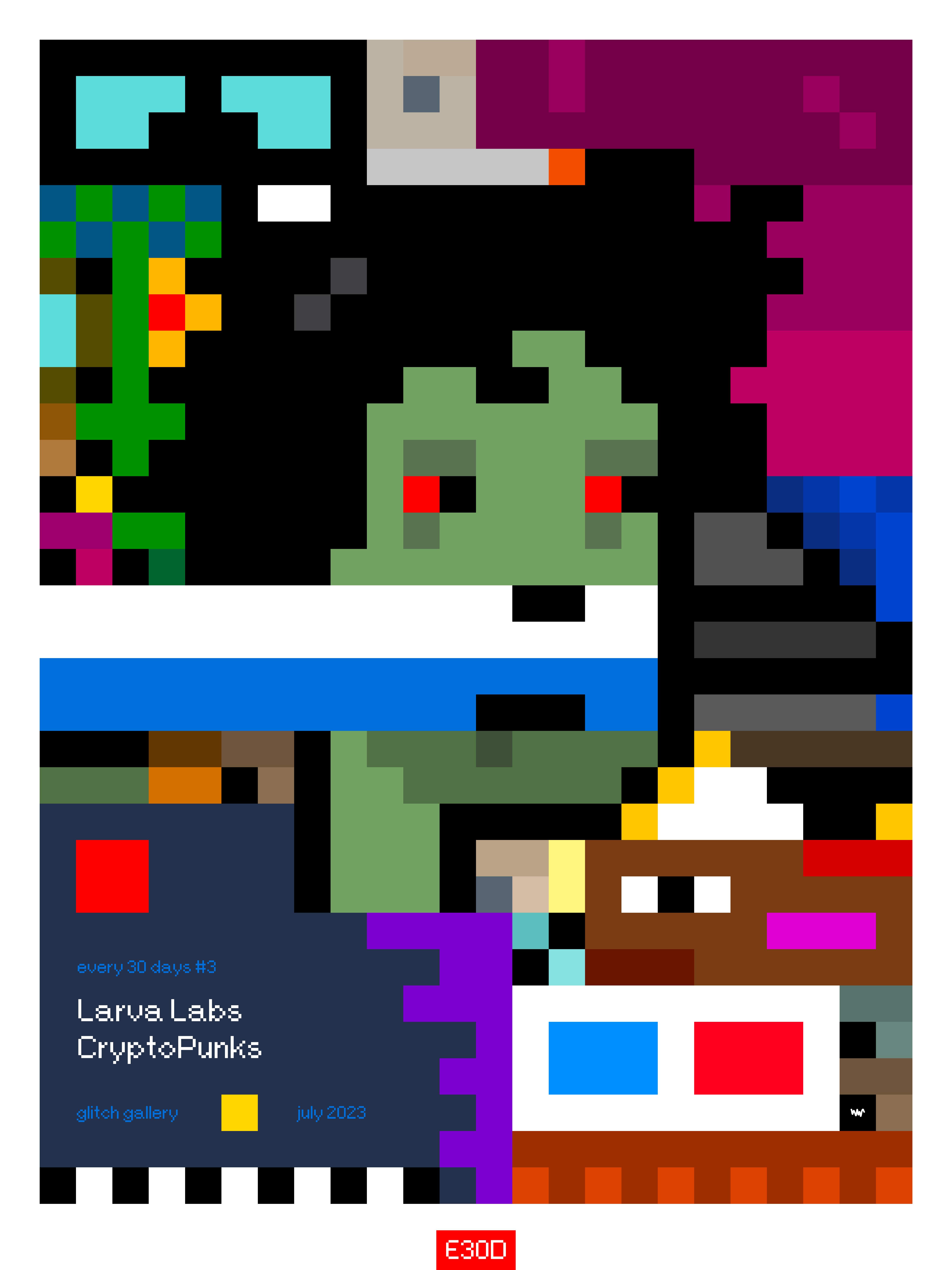In 2017, Larva Labs, a game design studio by John Watkinson and Matt Hall launched a digital art experiment on the Ethereum blockchain. The project paid tribute to London’s early ‘70s punk scene, cypherpunks, and pixel art. It came in the form of 10,000 unique, randomly assembled, 24x24 pixel art characters featuring an assortment of humans, zombies, apes, and aliens.
It was called CryptoPunks.
For a few weeks, anyone with an Ethereum wallet could claim these tokenized digital characters for free on the Larva Labs website. Living somewhere between generative art piece, collectible, and technical accomplishment, the project quickly stood out as having a number of differentiated characteristics compared to previous digital art projects:
- Each CryptoPunk could be uniquely identified on a public, trust-minimized database;
- Each CryptoPunk could be self-custodied in a sovereign controlled wallet;
- Each CryptoPunk could be bought or sold on a global, 24-7 blockchain marketplace created by Larva Labs.
The project’s characters, a radically diverse group of 8-bit personas, became an immediate cult collectible.
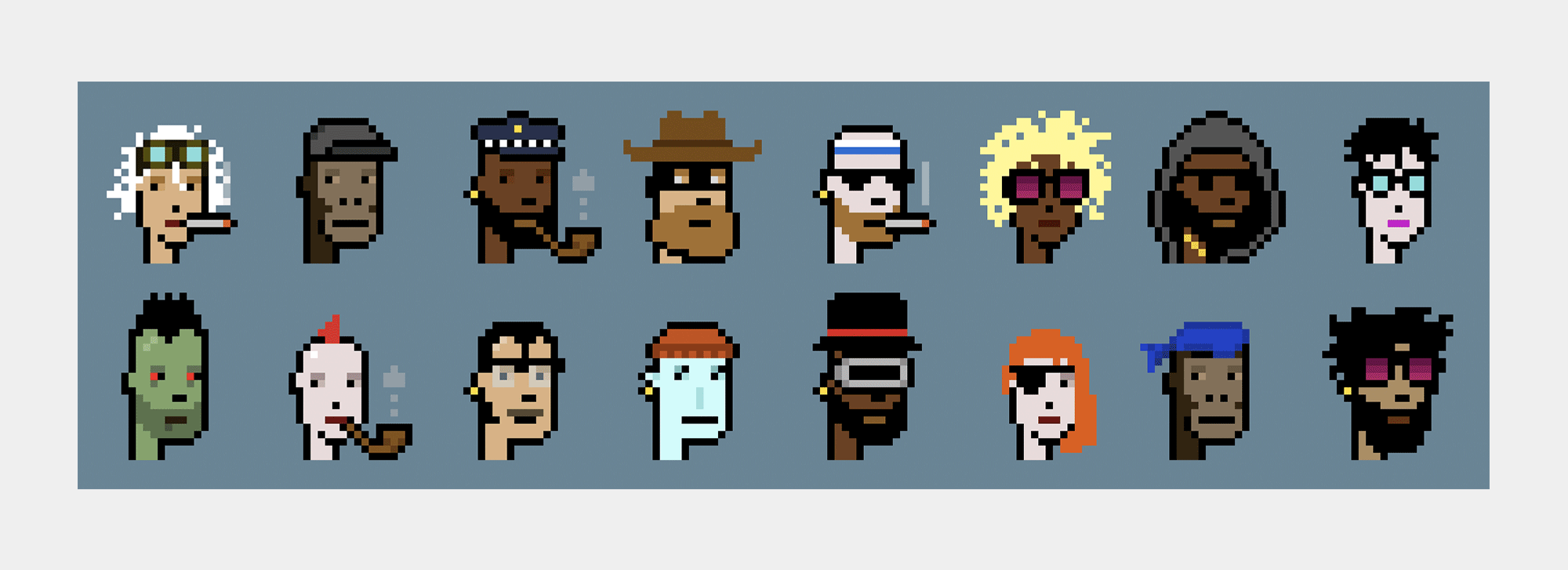
Since 2017, no project in the crypto art space has done more to help facilitate the formation of unique online personas.
Originating from the Latin “persōna,“ the word “person” initially referred to a theater mask. This type of mask is no mere disguise – it is a conduit for embodying a role, a separate identity.
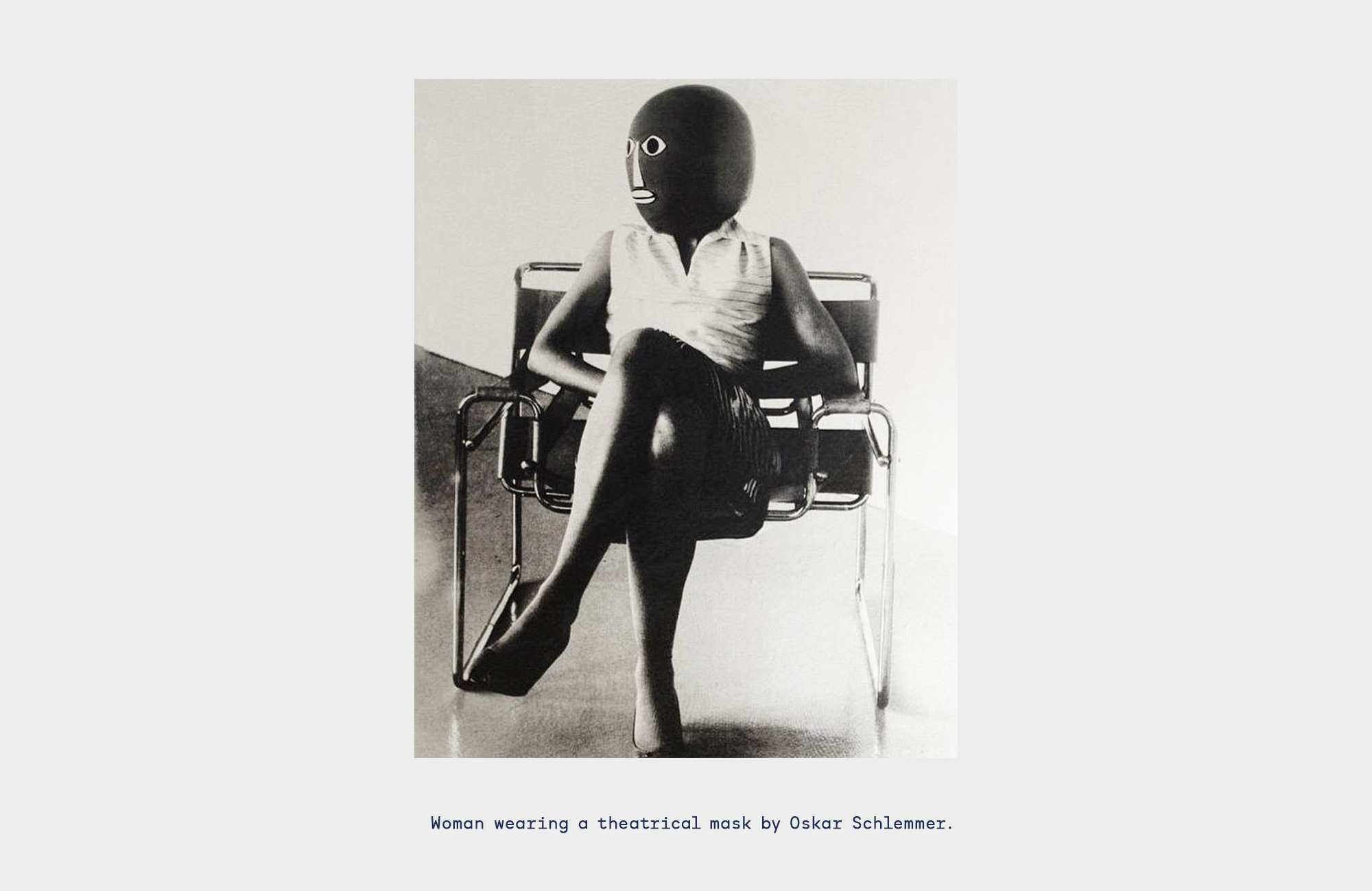
In many ways, a person’s identity can be seen as a collage of varied personas or masks: public, private, and professional, among others. It’s not primarily about the mask concealing the true face; rather, it’s about making room for various masks to emerge in different contexts.
Over the past two decades, the rise of social media ushered this concept into digital environments. Today, a blossoming internet economy brings a new stage for social performances: curating vacation pics, sharing professional victories, posting personal tributes publicly are the new tools for shaping modern masks.
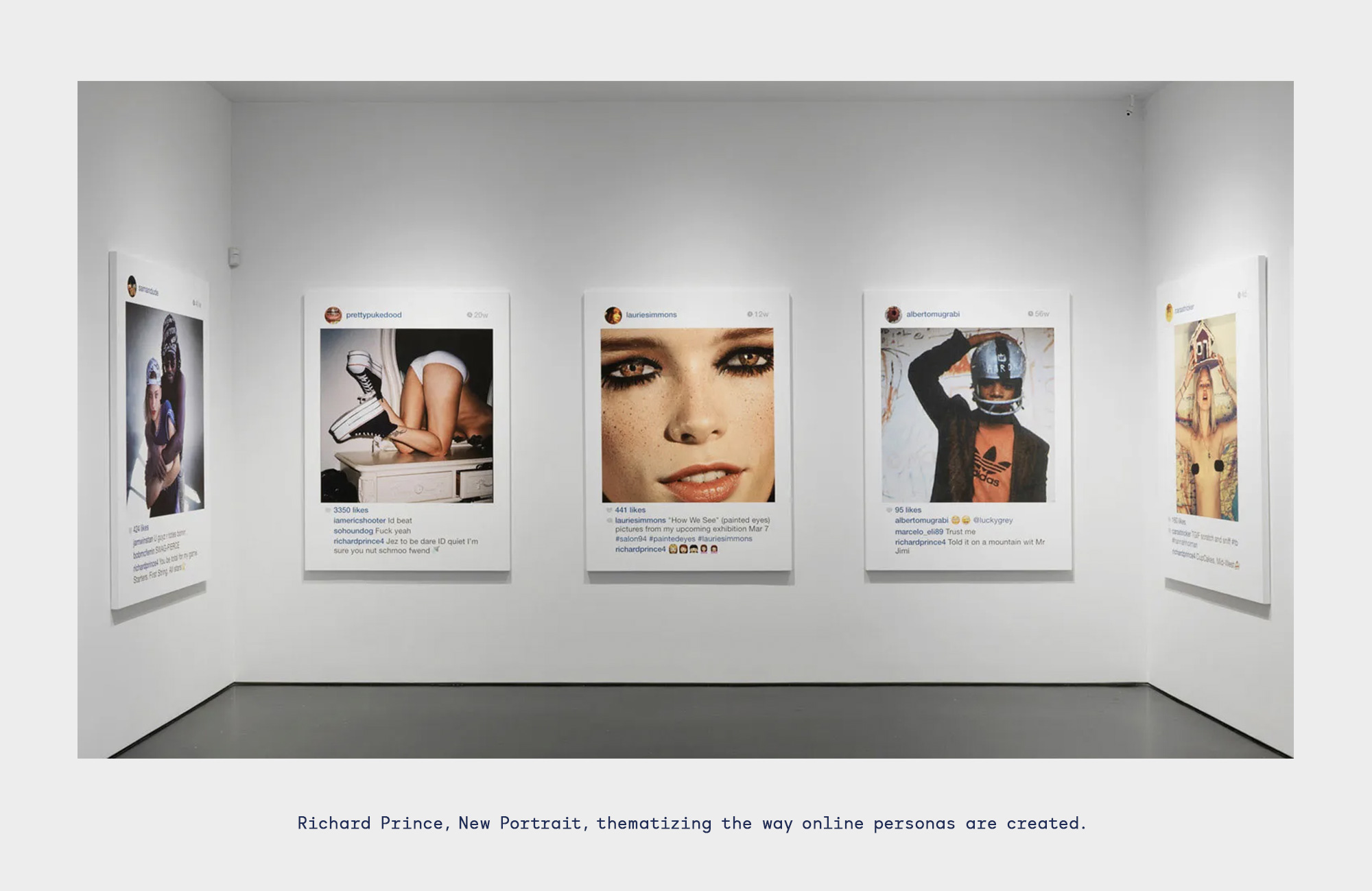
After the launch of CryptoPunks – and the breakthrough innovation of blockchain-based media – these digital identity tools have sharpened.
In the past, any digital file could serve as an online identity representation. In the wake of CryptoPunks, a growing number of blockchain tech enthusiasts have started to present their “owned” Punks as a marker of their online identity — swapping their Twitter, Telegram, and Discord profile pictures for images of their 24x24 pixel personas.
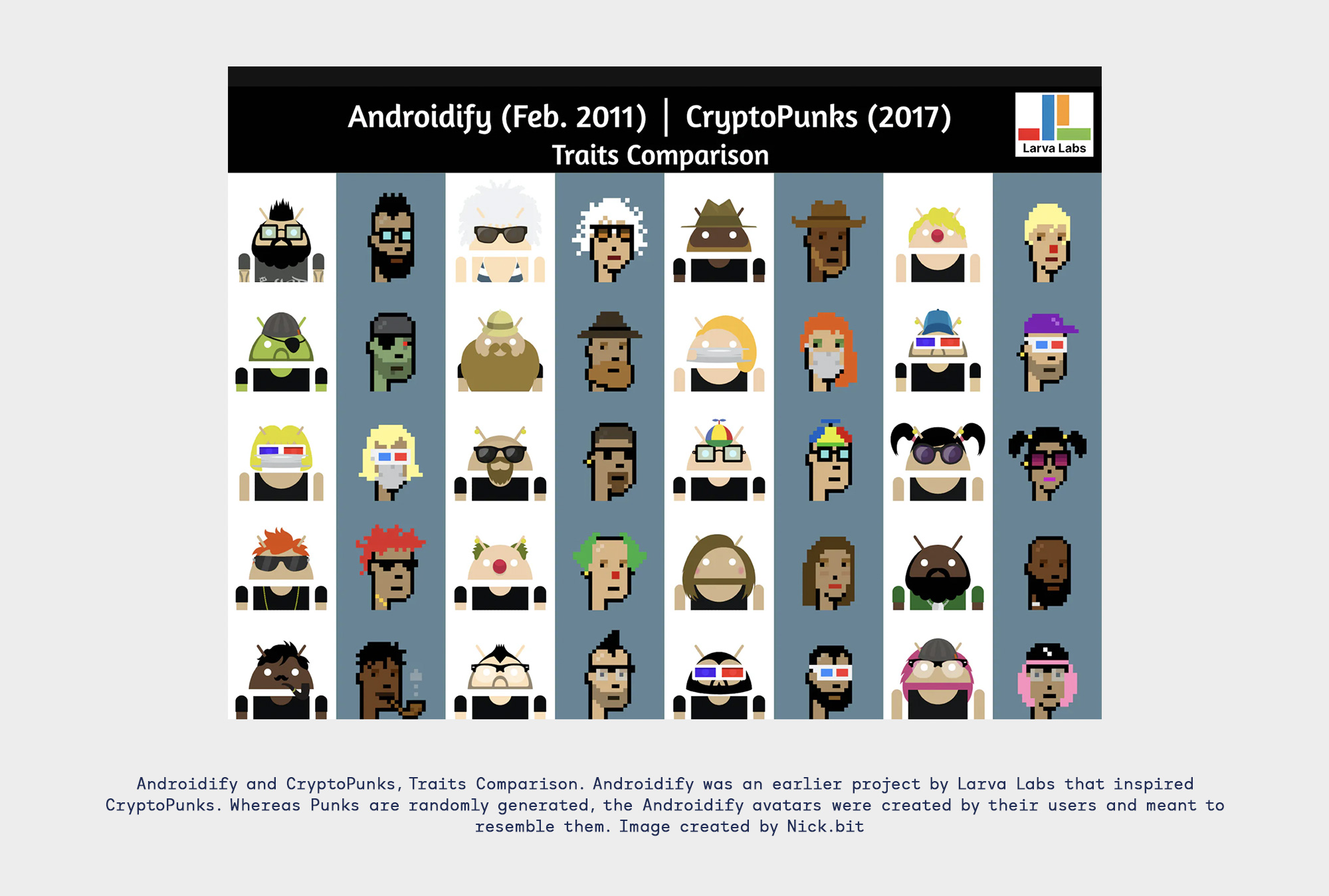
For many of these early blockchain technologists, builders, and enthusiasts, the CryptoPunk profile picture quickly reflected a more authentic version of their identity compared to a photorealistic image of their physical form. While an individual’s physical appearance is shaped by factors such as their environment, upbringing, and age, their digital masks, unencumbered by these constraints, gives them the liberty to architect a persona for internet-native spaces. As the theoretician of social mimicry, Roger Caillois, suggests, “the mask disguises the conventional self and liberates the true personality.”1
Adorning the digital Punk mask has allowed those holders to project a unique identity, yet remain linked to a larger collective – a group of true-believers who support the promise of trust-minimized technology.
Further, the pixelated Punk mask facilitated the creation of the pseudonymous identity in internet and crypto-native spaces, where the merit of one’s work product was often more interesting than their physical appearance. In addition, the cyberpunk imagery and the anti-authoritarian, anti-statist ethos of punk culture, which the collection alluded to, resonated with the libertarian leanings of the initial cryptocurrency community.
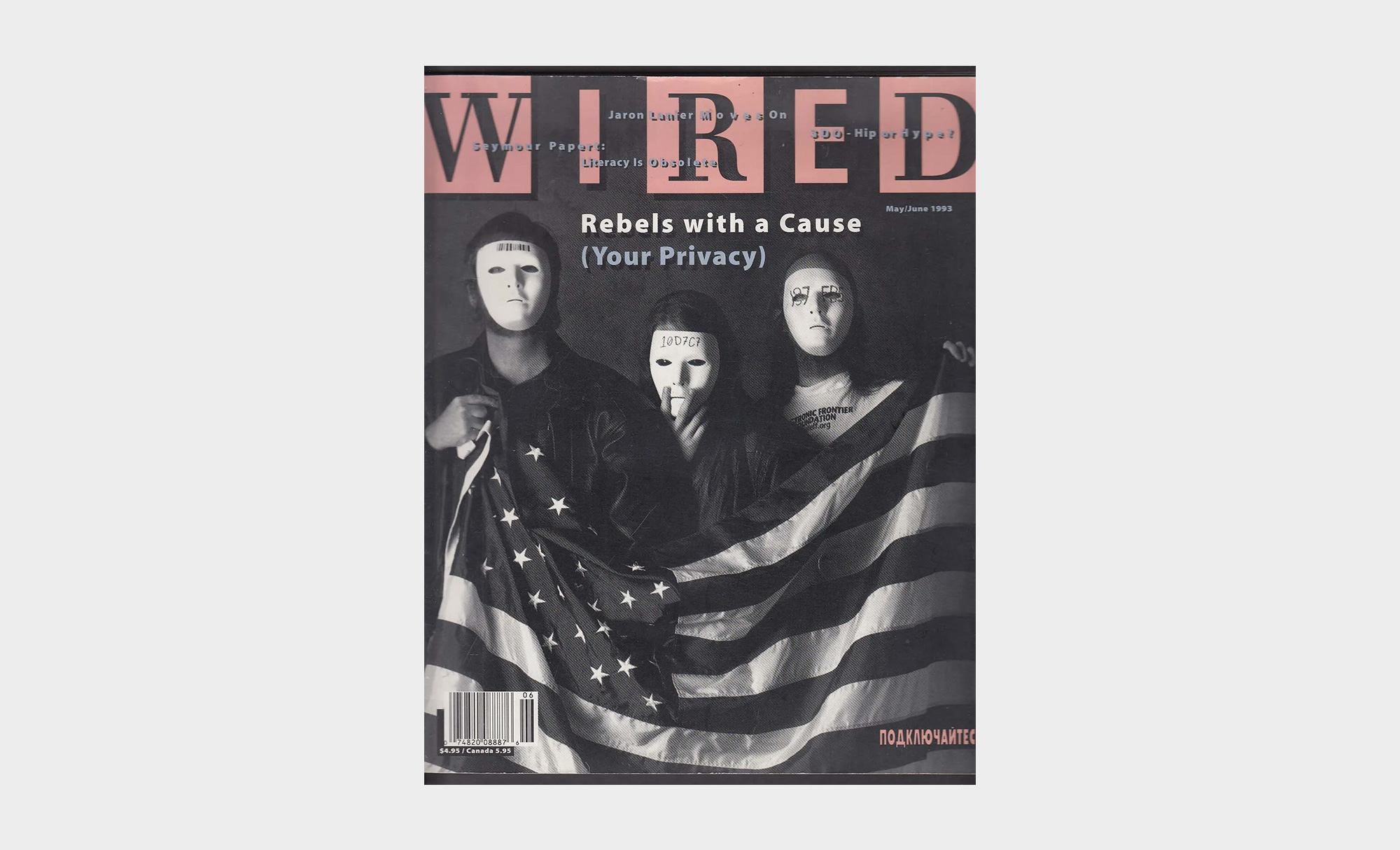
In the absence of any central authority, the community of Punks established a kind of decentralized ethos through mimicry, where nearly every member adheres to thoughtful commentary, building, and an overall aversion to excessive hype. Without exception, the sharpest people in the web3 space are Punks and many early adopters still set the tone for the digital object community.
Aesthetically, Punks exist on the fringe between figuration and abstraction, serving as a form of generative portraiture while also referencing the restraints of early computer graphics and the abstract nature of pixels.
When Georg Bak, a Swiss curator, met the Larva Labs duo in 2018, he expressed to them that their work was making art history. He invited them to exhibit in one of the first group exhibitions about blockchain art in Zurich alongside Kevin Abosch, Sarah Friend, Rhea Myers and Harm van den Dorpel.
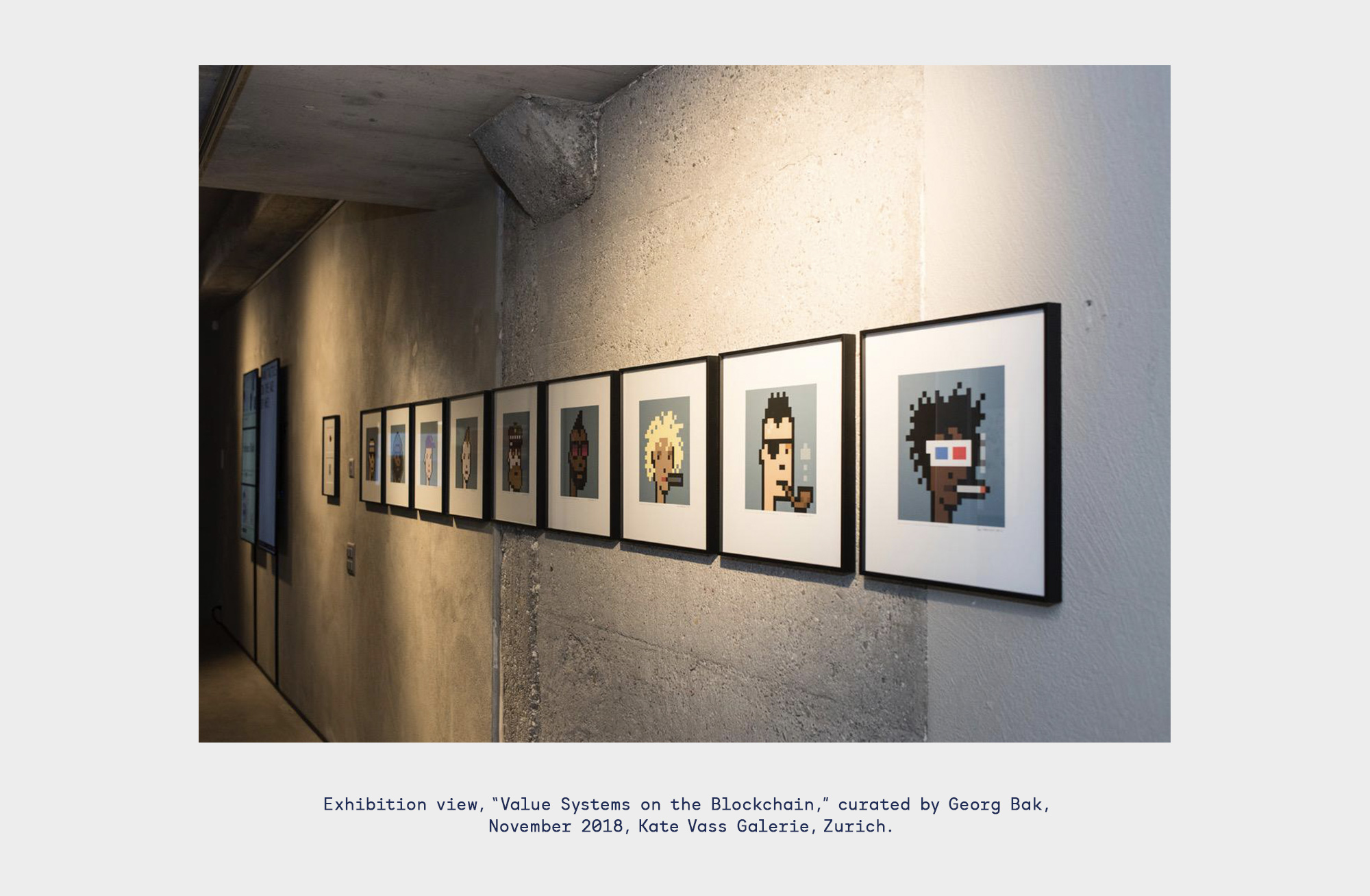
Asked about his prompt recognition of the cultural value of Punks, Bak notes: “I instantaneously knew the CryptoPunks were the Andy Warhol’s of our time and I told Kevin Abosch that it’s just a matter of time that collectors will pay more than a million for a CryptoPunk. He was laughing at me at the time.”2
While envisioning the project, Hall and Watkinson drew inspiration from Magic card collecting, aiming to replicate the elements of scarcity, uniqueness, and lasting value in a digital space. Their initial focus was building on Bitcoin, but ultimately, they found Ethereum to be the only feasible solution for hosting these unique digital items with inherent scarcity.3
Larva Labs modified the ERC-20 protocol for fungible tokens in such a way that it could produce unique digital objects, a move that would later inspire the design of the ERC-721 standard for non-fungible tokens, and the NFT industry as it exists today.
Faced with Ethereum’s storage limitations, Larva Labs originally developed a strategy of merging all 10,000 Punks into a single, comprehensive image. Tokens associated with each punk specify their respective locations within this unified visual map. The Punks contract incorporates the hash to verify the image file, thus providing a distinctive identifier for every punk—its positional data—that is stored in the metadata of the tokens.
Simply, Punks encompassed multiple innovations in one project:
They brought generative art to the Ethereum blockchain.
They inspired the very category of unique digital objects and blockchain-based media.
They created the first marketplace for exchanging unique digital objects.
Punks are, as Hall and Watkinson remark, “possibly the first work of art with a self-contained mechanism for recording and transacting its ownership.”4 Launching the marketplace function in tandem with this self-contained mechanism was pivotal to the success of Punks and the subsequent trajectory of digital objects, a fact often overlooked.
The influence of the CryptoPunks cannot be overstated. Erick Calderon, the generative artist known as Snowfro, became an early community moderator for the CryptoPunks Discord, and facilitated discussions about blockchain-recorded art to collectors and community members from 2017-2020.
After the Punks contract deployed, Snowfro discovered that the rarest—aliens and apes—were already secured by other collectors. So, he targeted Zombie Punks, another rare sub-collection, acquiring 34 out of the 88 available. In 2020, he sold five of these Zombies, and went on to use those sales to seed the initial development of the Art Blocks platform. Among his remaining collection is Punk 1478, a wild-haired Zombie, displayed at this month’s e30D exhibition and serving as Snowfro’s iconic avatar on both Twitter and Discord.
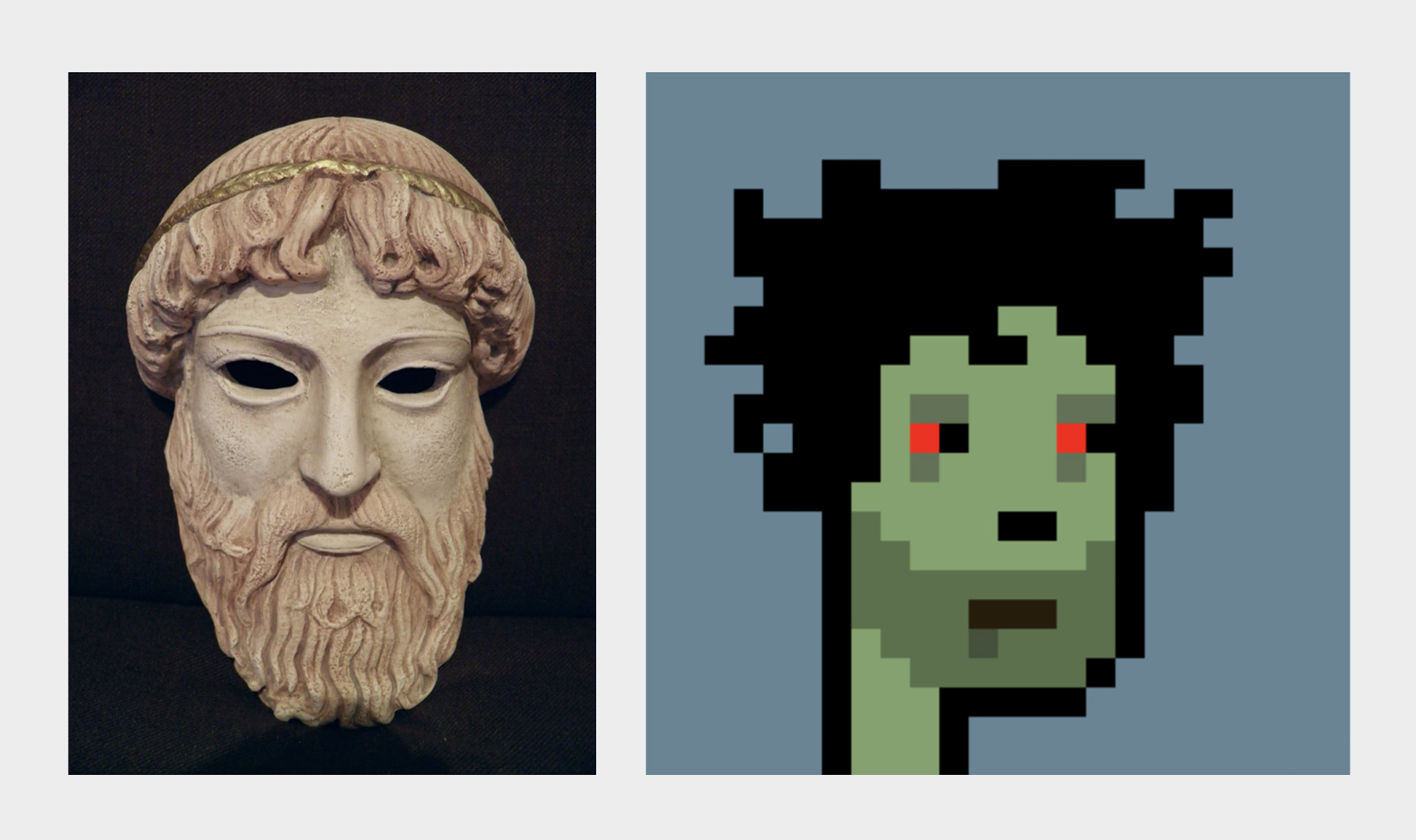
When asked about his view on the CryptoPunk’s lasting collectibility, Erick shares:
“CryptoPunks is a pure demonstration of technological brilliance and experimentation in the world of digital art. The project will carry lasting power as both a pioneering generative art collection, and a proof of concept that demonstrated ownership of a digital object on a public blockchain database. Larva Labs is the team that lit the fuse for my own love of the blockchain space, and I’m forever grateful for the role they played in bringing awareness to art and blockchain.”
Inspired by the technical innovations of the CryptoPunks project, and his own passion for generative art, Erick would later go on to extend Larva Labs’ innovations and create groundbreaking on-chain generative art projects of his own – the Chromie Squiggle, and the wildly successful Art Blocks platform. In particular, Art Blocks has opened the door for creative coders on the internet to build on-demand, on-chain, generative art projects for digital art collectors around the world.
In 2021, two of the leading on-chain crypto artists – Snowfro and Deafbeef – approached Larva Labs and suggested an upgrade to move Punks entirely on-chain. Instead of referencing the composite image, each Punk, along with all its attributes, was now stored directly on the Ethereum blockchain facilitated by a compression algorithm. Today, querying the contract on Etherscan directly provides the image of a Punk as either a raw set of pixels or an SVG – solidifying the status of individual Punks as unique, on-chain stores of values.
Value-accruing objects like fine art typically have low utility; they’re mainly stores of value meant to be left untouched. For the most part, this also holds true for items like watches and jewelry, which are solely worn as social status indicators.
While Punks have drawn parallels with such objects, they diverge from status-signaling value stores like jewelry and watches insofar as they allow users to craft comprehensive online identities. Viewed this way, Punks stand as pioneering assets combining the status of high art, value storage and a new type of digital use.5
As of this writing, the “market cap” of Punks (calculated by multiplying the floor price with the collection size) is greater than $950M+, positioning CryptoPunks in the uppermost tier of the art and collectibles market. To provide perspective: this conservative estimation would rank CryptoPunks—taking the collection as a whole—among the 100 most expensive paintings ever auctioned. Considering that the top 10 Punk sales have already surpassed $50M, the genuine financial value of Punks—as a whole—could approach the worth of the most valuable cultural objects ever exchanged on the open market.
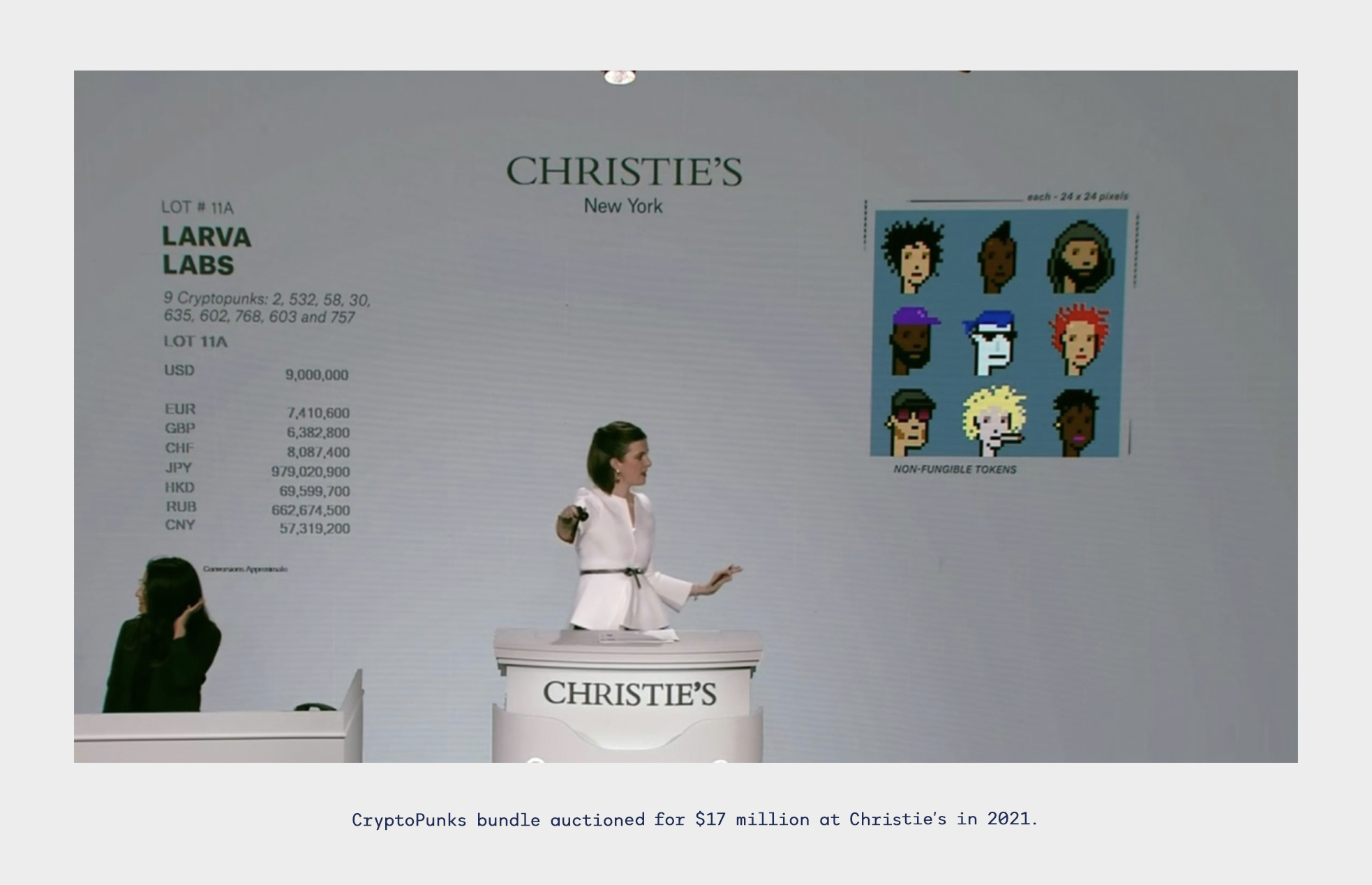
The unique blend of provenance, community, and social signal, all embedded in a hard capped supply, defines the value proposition for Punks. For the era of personal computers, we have Metcalfe’s law, which asserts that the value or influence of a telecommunications network is directly proportional to the square of the number of users connected to the system. In the era of digital objects, the glitch teams suggests a similar principle: Punk’s Law: the greater the number of wallets actively participating in the exploration of digital objects, the more attention will be attributed to Punks, with their value compounding over time.
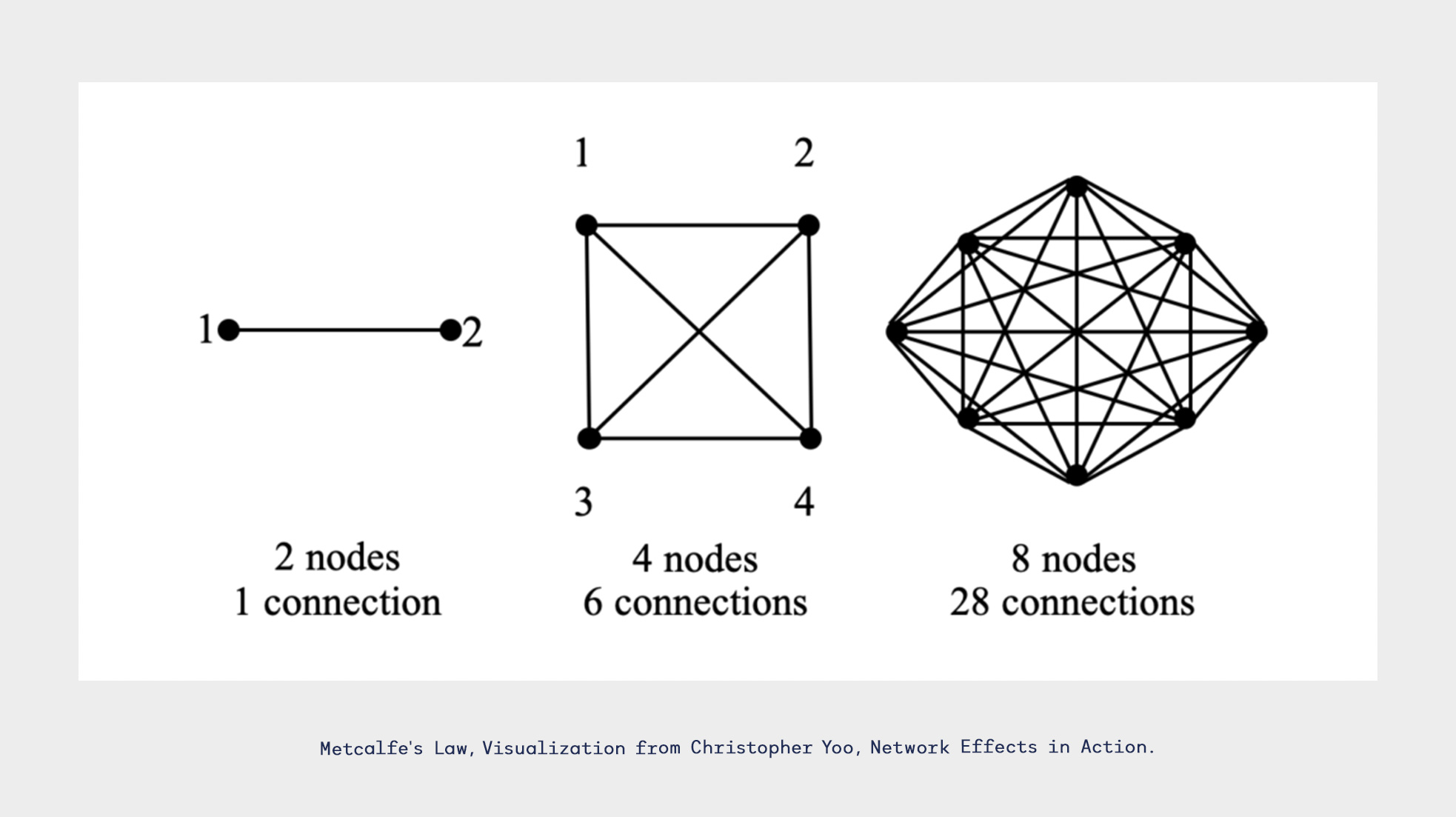
As a result of the continued success of CryptoPunks and the Art Blocks platform, it is our view that blockchain-based generative art will eventually be recognized as one of the most important movements in art history, a form that encapsulates values of digitization, technology, individuality, collectivism – tethered to dynamic, internet-formed communities in real time.
And centuries from now, as digital historians draw a line back through time, they’ll eventually land in the same place: All roads lead back to the Punks.
-
Roger Caillois, Man, Play, and Games (Chicago: University of Illinois Press, 1958), p. 21. ↩
-
Georg Bak, private message to the author, June 14th. ↩
-
On this, see Sandra Upson, “The 10,000 Faces That Launched an NFT Revolution” ↩
-
Quote from the article “10 things to know about CryptoPunks, the original NFTs” ↩
-
Note that this notion of “use” carries a radically different meaning from the idea of “utility” associated with PFP projects. These types of utility are best thought of as services, whereas Punks function as stores of value assets. On this distinction, see Derek Edwards, “Storing Value in Digital Objects.” The “use” of Punks emerges through decentralization (they have no “external dependencies,” as Edwards puts it); the “utility” of PFPs is a service facilitated by a centralized company. This is one, if not the reason why Punks created and outlived the PFP hype. ↩
.png)
